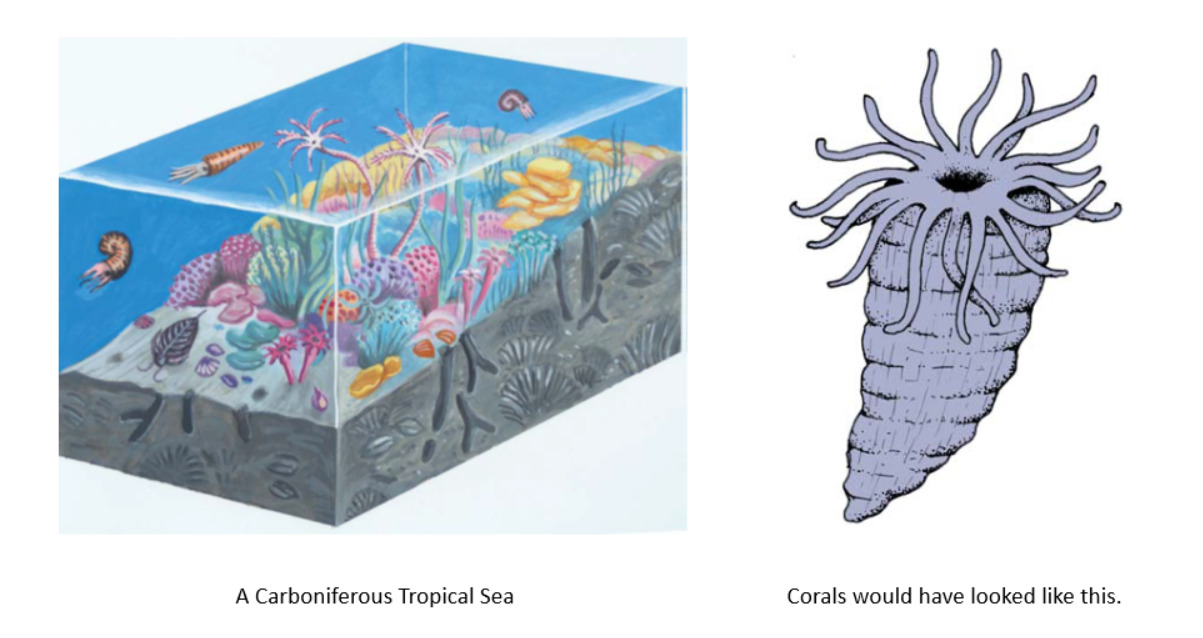This EarthCache will only be availble to visit during Cathedral open hours and when services are not being conducted. Please respect the Cathedral rules of no flash photography and please respect other users.
In 2014 Durham Cathedral was selected as one of the best Geosites in the British Isles for its magnificent sandstone pillars and use of the local ‘Frosterley Marble’, a black limestone containing fossil corals of the Carboniferous Period. It is this Frosterly Marble which will be the subject of this EarthCache.
Tropical seas
About 325 million years ago – in the Carboniferous Period – the piece of the Earth’s crust which would eventually become Britain lay almost astride the equator. Northern England basked in a tropical climate and was periodically covered by warm, shallow seas. Sea creatures such as corals, crinoids, sponges and brachiopods flourished in the clear, sunlit waters. Their remains accumulated on the sea floor, eventually becoming the layers of grey limestone sedimentary rock we see in the North Pennines today. This process is known as Lithification.

A bed of corals
Frosterley Marble is a layer of dark grey limestone which contains beautiful fossils of the extinct solitary coral Dibunophyllum bipartitum. These creatures had curved hornshaped skeletons and tentacles which filtered out particles of organic matter from the seawater. When they died, their skeletons collected on the sea floor and were covered by limy ooze which hardened into dark grey limestone. The corals are now visible as white shapes which show the internal structure of their skeletons in intricate detail.
A marble misnomer!
Despite its name Frosterley Marble is not a true marble, but a limestone which can be cut and polished to create an ornamental stone. To a geologist, marble is limestone which has been altered, or ‘metamorphosed’, by heat or pressure, or both, in the Earth’s crust. Frosterley Marble has not been affected in this way and so is technically a sedimentary rather than a metamorphic rock.
Tasks
To log this EarthCache please email me or reply through the message centre answers to the following
1.In front of the Font you will see a line of paved Frosterly Marble running along the ground which marked the point beyond which women were not allowed to pass.
a)Looking at these slabs describe the colour of the coral fossils and the sediment they are in.
b)There is one central slab that lies length ways. Estimate the number of coral fossils on this slab.
2.Now head to the Pulpit where you will see 3 arches constructed of 4 pillars - each pillar has several Frosterley marble columns
a)Look at the 4 pillars - How many columns of Frosterley marble are there here in total?
b)Look closely at the coral fossils in one of the columns and describe what recognisable body parts you can see
3.Finally locate the very tall impressive Frosterly Marble columns at the rear East side of the Cathedral.
a)Describe the feel of the marble columns
b)Get close up to one of the columns and estimate the average length and width of the coral fossils you see here